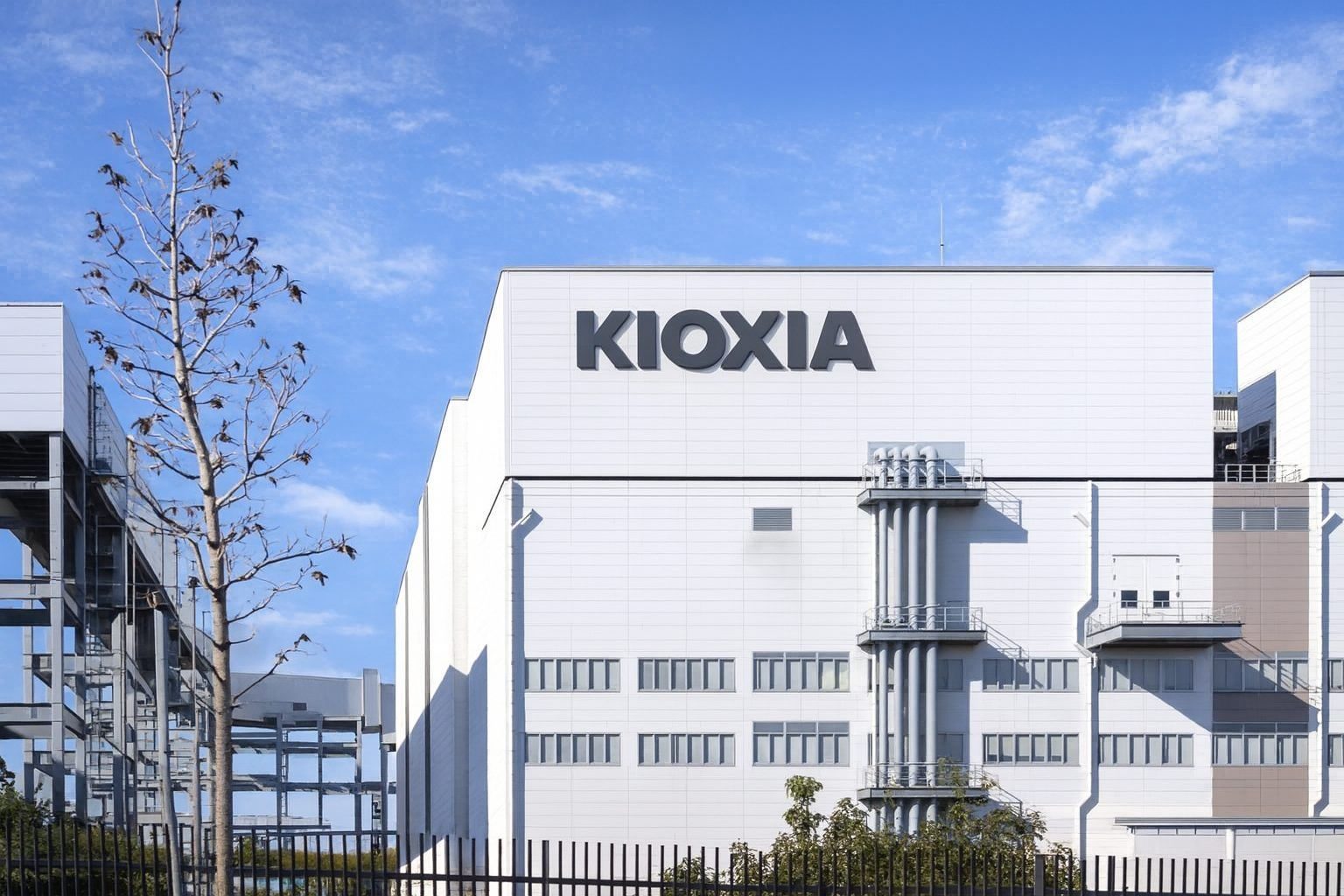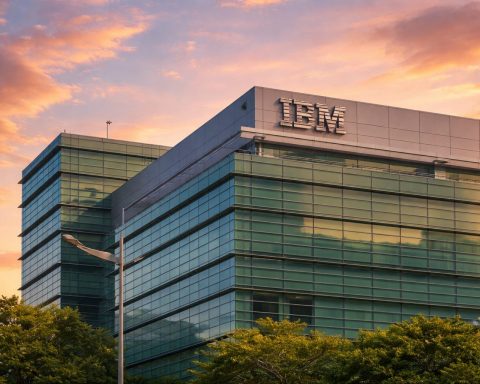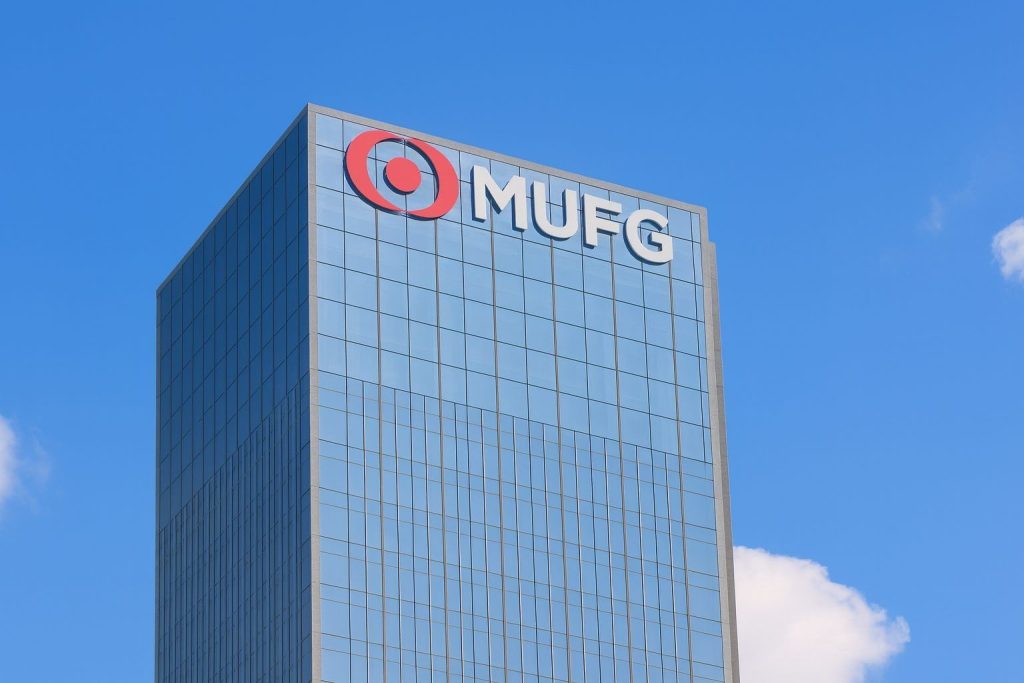Kioxia Holdings Corporation (Tokyo Stock Exchange: 285A, ISIN JP3236330001) is under heavy selling pressure this morning in Tokyo after its private‑equity backer Bain Capital moved to unload a large block of shares worth around $2–2.3 billion. The deal is expanding Kioxia’s free float – but at the price of a double‑digit drop in the share price.
As of around 9:55 a.m. JST on 26 November 2025, Kioxia shares were trading at about ¥8,767, down roughly 11% on the day from Tuesday’s close of ¥9,853. The stock has already swung between ¥8,505 and ¥8,859 in early trade, leaving the company with a market capitalization near ¥5.3 trillion and a 52‑week range of ¥1,440–¥14,405. [1]
Kioxia stock today: sharp drop as Tokyo digests Bain’s block trade
Market data from the Tokyo Stock Exchange and several quote providers show a sudden repricing of Kioxia Holdings (TSE: 285A) in the morning session on 26 November 2025: [2]
- Last trade (approx.): ¥8,767
- Change vs previous close: about ‑¥1,086 (‑11%)
- Previous close (25 November): ¥9,853
- Intraday range so far: roughly ¥8,505–¥8,859
- 52‑week range:¥1,440–¥14,405
- Market cap: ~¥5.3 trillion
- Trailing 12‑month revenue: ~¥1.59 trillion
- Trailing net income: ~¥155 billion
- Trailing P/E: ~34x; forward P/E around 12x [3]
Trading volumes have already surpassed 10 million shares shortly after the open, compared with an average daily volume of roughly 33 million shares, underlining how aggressively the market is reacting to the overnight news. [4]
Bain Capital’s ¥330 billion selldown: what actually happened?
The key catalyst for today’s sell‑off is a large secondary share sale by a Bain Capital‑backed vehicle.
According to reports based on Nikkei and Reuters coverage, a special‑purpose entity funded by Bain will sell 36 million Kioxia shares to overseas institutional investors via a block trade, with settlement expected on Friday. [5]
Key details from the block trade announcements and market commentary:
- Size: 36 million shares, equal to roughly 6.7% of Kioxia’s outstanding stock (540.63 million shares). [6]
- Deal value: Estimated at around $2.0–2.3 billion, based on Kioxia’s Tokyo closing price on Tuesday. [7]
- Structure: Shares are being placed with overseas institutional investors via a block trade, rather than sold in the open market, which is designed to reduce immediate order‑book pressure but still changes the ownership landscape. [8]
A Bloomberg report this morning notes that Kioxia’s shares “dived more than 12%” after the Bain‑backed firm disclosed the sell‑down, making the stock one of Tokyo’s worst performers on the day. [9]
This isn’t Bain’s first step towards cashing out. After Kioxia’s December 2024 IPO, Bain retained just over 50% of the company, while Toshiba and Hoya held substantial minority stakes. [10] Since then, other shareholders, including Toshiba and Hoya, have already sold down stakes in earlier transactions. [11]
The new 36‑million‑share block will meaningfully reduce Bain’s holding from those post‑IPO levels, although the firm is still expected to remain Kioxia’s largest single shareholder. The exact post‑deal stake has not yet been publicly disclosed.
From AI market darling to volatile chip stock
The timing of Bain’s exit is important. Kioxia has been one of the most spectacular beneficiaries of the AI‑driven memory “supercycle”.
- Kioxia’s IPO in December 2024 was priced at ¥1,455 per share, valuing the company at about ¥784–820 billion. [12]
- Since listing, the stock has traded as high as ¥14,405, almost 10x the IPO price, fueled by booming demand for NAND flash in AI data centers and high‑capacity SSDs. [13]
But 2025 has also highlighted how quickly sentiment can turn when AI expectations get ahead of fundamentals.
On 14 November 2025, Kioxia’s shares plunged by about 23% in a single day after the company’s near‑term outlook failed to match “lofty AI hopes.” [14] Regional market coverage describes Kioxia as the “epicenter” of a broader sell‑off in Asian semiconductor stocks, as investors reassessed high valuations across the AI trade. [15]
Ironically, the earnings themselves were not weak:
- Latest earnings release (12 November 2025):
- EPS: ¥75.36 vs consensus ¥68.27
- Revenue: ¥448.35 billion vs consensus ¥448.21 billion [16]
Kioxia is growing again, but the market had been pricing in near‑perfect execution and sustained AI euphoria. That left the stock vulnerable to any disappointment – and set the stage for Bain’s selldown to land on a fragile investor base.
Fundamentals: top‑tier NAND player with improving earnings
Despite the volatility, the underlying business picture is more nuanced than today’s price chart suggests.
Leading position in NAND flash
Rating agency Fitch and industry researchers describe Kioxia, together with its long‑time partner Sandisk, as one of the top two or three NAND flash memory producers globally, alongside Samsung and SK hynix. [17]
This scale matters:
- It gives Kioxia leverage over manufacturing costs at its Yokkaichi and Kitakami mega‑fabs in Japan. [18]
- It positions the company as a key supplier to cloud hyperscalers, smartphone makers and enterprise storage vendors worldwide. [19]
Strategic push into AI and high‑performance storage
Kioxia has spent the past year aggressively messaging its role in AI, HPC and cloud workloads:
- It is rolling out CD9P‑series high‑performance NVMe SSDs designed to maximize GPU utilization in AI and high‑performance computing data centers. [20]
- The company has previewed a 332‑layer 10th‑generation BiCS FLASH chip as part of a “dual‑axis” strategy that boosts both capacity and performance without relying on experimental PLC (Penta‑Level Cell) technology. [21]
- Its LC9 series now includes a staggering 245.76TB SSD, currently the largest SSD publicly announced, aimed squarely at hyperscale AI and big‑data customers. [22]
- A planned XL‑Flash SSD promises over 10 million IOPS and direct GPU connectivity to reduce AI inference bottlenecks. [23]
At its June 2025 strategy update, Kioxia also outlined a plan to double NAND production capacity by fiscal 2029 (vs FY2024), largely by expanding its Yokkaichi and Kitakami plants to meet AI data‑center demand. [24]
Taken together, Kioxia is clearly positioning itself as a core infrastructure provider for the AI era, not just a commodity memory supplier.
Balance sheet and credit profile: leverage, but improving
In May 2025, Fitch Ratings assigned Kioxia a first‑time ‘BB+’ credit rating with Stable outlook, highlighting: [25]
- A strong market position in NAND flash
- Exposure to cyclical memory pricing
- Leverage that should gradually ease as operating conditions improve
Public filings and third‑party analytics indicate that Kioxia generated around ¥1.59 trillion in revenue and ¥155 billion in net income over the last twelve months, translating into trailing EPS of roughly ¥288 per share. [26]
On today’s depressed price near ¥8,800, that implies:
- Trailing P/E: mid‑30s
- Forward P/E: low teens, based on consensus earnings estimates [27]
These valuations are not “cheap” in an absolute sense, but they are much lower than at the 2025 highs, when Kioxia traded as a high‑beta proxy for AI enthusiasm.
Ownership, free float and index implications
For many institutional investors, who owns Kioxia is almost as important as the earnings trajectory.
Bain still a key shareholder – but de‑risking
Bain led the ¥2 trillion buyout of Toshiba’s memory business in 2018, then listed Kioxia on the TSE in December 2024 while retaining a controlling stake of just above 50%. [28]
As of March 2025, public data suggested the shareholder structure was roughly: [29]
- Bain Capital (via Pangea Cayman and affiliates) – just over 51%
- Toshiba – around 30%
- Hoya – about 3%
Subsequent market commentary notes that Toshiba and Hoya have already sold down a combined 11.6% of shares between Q2 and mid‑October 2025. [30]
Today’s 36‑million‑share Bain block adds another 6.7% of outstanding shares to the market. That:
- Increases Kioxia’s free float, which is generally positive for liquidity and index inclusion
- Moves Bain further along the path from controlling owner to large but more “ordinary” strategic shareholder
Smartkarma analysts estimate that the block represents about 2.7 days of average daily volume since listing – large but digestible for Japan’s deep equity market. [31]
There is also an index angle: research notes suggest that Kioxia is a strong candidate for inclusion in major Japanese semiconductor and possibly broader stock indices in 2026, helped by a rising free float and market cap above ¥5 trillion. [32]
Why the market hates the deal – at least today
So why is the stock down double digits if the business is improving and liquidity is increasing?
1. Signaling effect: “smart money” taking profits
Bain’s selldown comes after Kioxia’s near‑tenfold rise from IPO price to 2025 highs. Commentators at GuruFocus and other outlets explicitly frame the move as Bain “dumping” around $2.3 billion of stock “just as AI hype starts to crack.” [33]
When a sophisticated financial sponsor trims a long‑held position shortly after a big rally, the market often reads that as a sign that upside from here may be more limited or more volatile.
2. Supply shock: more stock to absorb
Even though the block is being placed off‑market, the increase in free float means there is simply more stock available for sale in the future. Some traders will front‑run the possibility that new institutional holders could trim positions, especially if AI sentiment weakens further.
3. Macro headwinds for AI and chip names
Today’s move also sits within a broader wobble in AI‑related equities globally. Several reports note that investors are starting to question the most stretched valuations within the AI ecosystem, from GPU suppliers to memory makers. [34]
Kioxia, which was treated as a high‑beta AI proxy, is naturally more sensitive to that mood shift.
What today’s move could mean for different types of investors
This section is for information only and does not constitute investment advice.
Short‑term traders
For short‑term traders, Kioxia has effectively become a momentum and event‑driven stock:
- The stock is now more than 35% below its mid‑November levels after the earnings shock and Bain news, yet still many multiples above its IPO price. [35]
- Intraday ranges of several hundred yen make it attractive – and risky – for day traders and arbitrage desks.
Key things short‑term players may watch:
- Whether Kioxia stabilizes around the ¥8,500–¥9,000 band, which roughly corresponds to today’s early intraday lows and prior consolidation zones. [36]
- Any discount on the block trade price versus Tuesday’s close – if the placement clears smoothly, it can sometimes mark a near‑term floor.
Medium‑ and long‑term investors
Longer‑horizon investors will likely be more focused on three big questions:
- Can Kioxia translate AI demand into sustainably higher margins?
- The latest quarter beat earnings expectations and guidance points to continued recovery, but the November shock showed how fragile sentiment can be if forward guidance falls short. [37]
- How quickly will leverage fall?
- Kioxia still carries debt from its leveraged buyout and fab investments. Rating agencies expect gradual deleveraging, but that depends heavily on memory pricing staying firm and capex being disciplined. [38]
- Where does Bain go from here?
- Today’s block is likely not the last. Many observers expect further selldowns over time, especially if the stock regains momentum. That could create recurring overhangs – but each successful block also dilutes private‑equity control and broadens the investor base. [39]
Key levels and dates to watch after 26 November 2025
Based on today’s setup and recent corporate communications, investors may keep an eye on:
- Price zones
- ¥8,500: Today’s approximate intraday low – a first area of potential support. [40]
- ¥9,853: Tuesday’s close and near‑term reference point for the block trade pricing. [41]
- ¥14,405: 52‑week high; any return toward this level would likely require a renewed wave of AI optimism or strongly positive earnings surprises. [42]
- Corporate and macro events
- Future quarterly earnings after the 13 November release, which already proved to be a major catalyst. [43]
- Updates on Kioxia’s capacity expansion and product roadmap, including further details about 332‑layer BiCS, ultra‑high‑capacity SSDs and XL‑Flash, all of which tie directly into AI data‑center growth. [44]
- Possible index inclusion decisions in 2026, which could trigger additional passive inflows. [45]
Bottom line: Kioxia’s 26 November 2025 sell‑off is about ownership, not collapse
Kioxia’s double‑digit slide today is not the result of a sudden deterioration in its business. Instead, it reflects:
- A large private‑equity selldown by Bain Capital after a huge post‑IPO rally
- A market still digesting an earlier AI‑expectations reset from mid‑November
- Broader jitters around valuation across high‑beta AI beneficiaries
Underneath the volatility, Kioxia remains a top‑tier NAND flash producer with a clear strategic focus on AI and cloud storage, active capacity expansion plans, and improving profitability – but also meaningful leverage and exposure to the notoriously cyclical memory market.
References
1. stockanalysis.com, 2. stockanalysis.com, 3. stockanalysis.com, 4. stockanalysis.com, 5. www.tradingview.com, 6. stockanalysis.com, 7. www.marketscreener.com, 8. www.tradingview.com, 9. www.bloomberg.com, 10. www.reuters.com, 11. www.smartkarma.com, 12. www.reuters.com, 13. stockanalysis.com, 14. www.bloomberg.com, 15. www.mk.co.kr, 16. www.investing.com, 17. www.fitchratings.com, 18. de.wikipedia.org, 19. www.businesswire.com, 20. www.businesswire.com, 21. www.techradar.com, 22. www.techradar.com, 23. www.tomshardware.com, 24. www.trendforce.com, 25. www.fitchratings.com, 26. stockanalysis.com, 27. stockanalysis.com, 28. www.reuters.com, 29. de.wikipedia.org, 30. www.smartkarma.com, 31. www.smartkarma.com, 32. www.smartkarma.com, 33. finance.yahoo.com, 34. m.economictimes.com, 35. www.tipranks.com, 36. stockanalysis.com, 37. www.investing.com, 38. www.fitchratings.com, 39. www.smartkarma.com, 40. stockanalysis.com, 41. www.marketwatch.com, 42. stockanalysis.com, 43. www.investing.com, 44. www.techradar.com, 45. www.smartkarma.com







